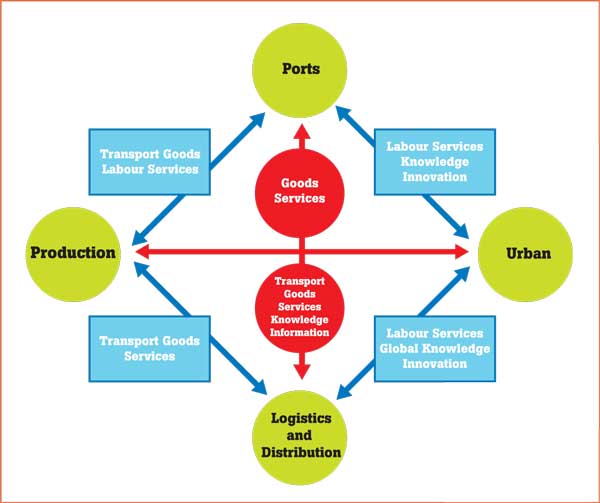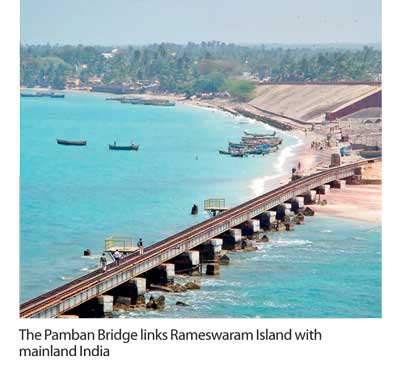28 Jul 2016 - {{hitsCtrl.values.hits}}

South Asian countries face a quandary: robust regional growth that clocked in at 6 percent a year over 20 years still sits side-by-side with a number of intractable development challenges.
Among them is finding well-paying jobs for a workforce of over 400 million, and which is expected to grow. The region is expected to account for 40 percent of the growth in the world’s working-age population until 2050. Currently, around 50 percent of workers in India and 48 percent in Bangladesh are engaged in the agriculture sector, which is characterized by very low productivity.

At the same time, there is very little cross-border trade which also undermines economic growth and job creation. South Asia is one of the least integrated sub regions in the world; intra-regional trade stands at only 5.3 percent of total trade, compared to 7 percent in Central Asia, 26.6 percent in Southeast Asia, and 35.5 percent in East Asia.
Need new ways
Clearly, we need new ways to bring forth industrial development and create high-value jobs. One of these is by way of economic corridor development (ECD).
For instance, India is currently developing five economic corridors, including the ADB-supported East Coast Economic Corridor that runs from Kolkalta to Tuticorin along the eastern coastline. Other proposed corridors are the Colombo-Trincomalee Economic Corridor in Sri Lanka, and the Southwest Economic Corridor in Bangladesh. So, what is ECD? How is it different from the traditional connectivity projects? What are the expected benefits for countries adopting it as a primary development strategy?

ADB first coined the term ‘economic corridors’ in 1998 as a concept for planned development across a geographical space, which emerged in the early 1990s with ADB’s Greater Mekong Subregion project and Europe’s Maastricht Treaty. Given its wide-ranging features that cut across various sectors of the economy, the definition is constantly evolving. Scaling new heights: Vizag-Chennai Industrial Corridor, India’s first coastal corridor, an ADB flagship book published in May, notes an economic corridor typically involves the creation of an efficient multimodal transport network within a defined geography supported by quality infrastructure, logistics, a policy framework that facilitates doing business, and setting up distribution networks that link production centers, urban clusters, and international gateways.
While the traditional connectivity concept focuses on the end-points of the corridor with limited consideration of what goes on between them, the economic corridor concept deliberately stimulates the interior of the corridor with essential economic agents.
Complementary components
As such, an economic corridor may be seen as having three complementary components. First is the trade and transport corridor itself, where roads and ports are an integral component, especially in the context of logistics performance, second are the industrial production clusters that produce goods and services, and finally are the urban centers that function as major markets and as a source of labor, technology, knowledge, and innovation.
To maximize business enthusiasm and strengthen infrastructure ADB also provides support for institutional reforms to boost economic corridor management and regulatory reforms to improve the ease of doing business and attract foreign investors, logistics, and other related services.
What can South Asia expect from economic corridors? If implemented well, the ECD strategy promises a faster rate of industry growth and improved productivity, creation of higher-paying jobs and skills development, an influx of foreign investors, and increased exports, among others. These are achieved altogether through judicious public and private investment in the necessary infrastructure for connectivity, production, logistics, and urban living.
Analysis for our $720 million Visakhapatnam–Chennai Industrial Corridor Development Program—part of the East Coast Economic Corridor—shows that over the 20 years from fiscal year 2015–2016, total output in the area if there is no corridor would increase from Rs1,110 billion (about $16.4 billion) to around Rs.3,000 billion. However, with a fully maximized ECD, output would rise to over Rs.7,823 billion over the same period. In terms of employment generation, the number of jobs in seven key sectors would increase from 2.9 million to between 5.8 million without ECD or 11.8 million with ECD.
And in stretching across countries, often to national borders as India’s East Coast Economic Corridor does or to key ports, businesses have far more opportunity for cross border trade, ultimately serving to more closely integrate the sub-region’s economies.
(Courtesy: Asian Development Bank)
(The writer focuses on economic research, planning and disseminating knowledge related to economic corridor development projects in South Asia. Prior to joining ADB, he worked in the Republic of Korea’s Ministry of Strategy and Finance, responsible for macroeconomic policy formulation, international financial cooperation, and free trade
agreement negotiation)
10 Jan 2025 1 hours ago
10 Jan 2025 2 hours ago
10 Jan 2025 3 hours ago
10 Jan 2025 3 hours ago
10 Jan 2025 3 hours ago